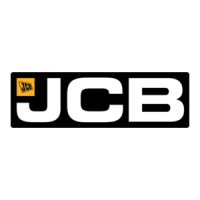Section 2-1 - Care and Safety
Safety Notices
Safety Check List
2-1-4 2-1-4
9803/3750-05 (2-01-01)
Effects of Contamination
Once inside the system, fuel circuit contaminants greatly
effect the performance and life of the fuel injection
equipment. For example, contaminants in the fuel pump
will develop internal wear to cause internal leakage and
hence lower discharges. Use of poor quality fuels and poor
maintenance could also lead to contaminants entering the
fuel injectors. There is a possibility of catastrophic
equipment failure if debris should prevent the injectors
from fully closing. The main contaminants can be classified
as follows: These contaminations can appear during
manufacture. assembly and operation.
– Solid Particles - sand, fibres, metallic particles,
welding scale, sealing materials and wear particles
etc.
– Liquid - usually water and incompatible oils and
gases.
– Gases - Air, sulphur dioxide etc. which can create
corrosive compounds if dissolved in the fluid.
It is critical that the machine is thoroughly cleaned prior to
completing any maintenance work. The main filter is rated
at 2 micron = 0.002 mm (0.0007874 in).
Listed are a few typical comparisons of micron size:
– Red Blood Cell = 8 microns (0.008 mm, 0.000315 in).
– Human Hair = 70 microns (0.07 mm, 0.00275 in).
– Grain of Salt = 100 microns (0.1 mm, 0.00394 in).
– The smallest particle visible to the naked eye is 40
microns (0.00157 in) approximately.
Common Rail Safety Checklist
The following safety checklist is intended to help remind
you of safety procedures and practices relating to a
common rail SE engine.
SAFETY IS YOUR RESPONSIBILITY
– Do make sure the engine and surrounding area has
been thoroughly cleaned prior to completing any
maintenance tasks. Refer to Section 1, Cleanliness
Requirements.
– Do complete all work in accordance with the Service
Manual procedures.
– Do disconnect both the battery positive (+) and
battery negative (-) cables prior to completing any
welding on the machine.
– Do use the recommended grade of fuel (EN590). The
fuel injection pump, injector or other parts of the fuel
system can be damaged if you use a fuel or fuel
additives not recommended by JCB. Refer to Section
1 - Acceptable and Unacceptable Fuels.
– Do make sure all the necessary new parts are
available before starting any maintenance work.
– Do not `crack' the injector high pressure fuel lines to
bleed the fuel system. The system operates at
pressures in excess of 1200 bar (17400lbs/in
2
).
– Do not steam clean the electronic control unit (ECU)
or the ECU connectors.
– Do not touch the ECU connector pins, this will
eliminate the possibility of damage caused by
electrostatic discharge.
– Do not leave any fuel connections `open' for any
extended period of time.
– Do not open any new parts packaging until the part is
ready to be fitted. Unnecessary exposure will
increase the risk of contamination.
– Do not reuse high pressure fuel pipes. Reusing the
pipes will lead to potential fuel leaks.
– Do not attempt to remove and replace the rail
pressure sensor or high pressure valve. It is not
possible to refit these components without the risk of
fuel leaks. If the valve or sensor is diagnosed as faulty
then a new common rail assembly must be fitted.
ProCarManuals.com

